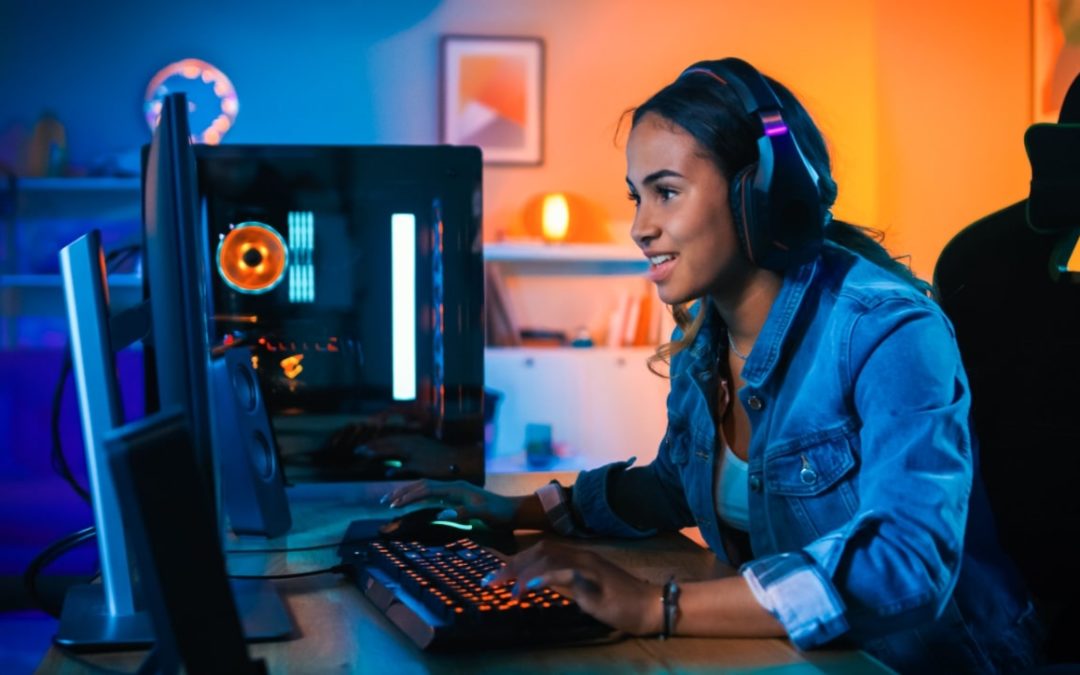Since its introduction in the 1990s, the popularity of esports has grown enormously, particularly in the past few years. When traditional sports and entertainment vanished overnight amid the COVID-19 pandemic, investment in eSports quickly became a prominent solution for stakeholders across many industries.
Yet the big news in esports isn’t necessarily the steep hike in popularity, but rather the growing role of women and female or femme-identifying persons within the platform. More women are involved in gaming than ever before as viewers, players and industry professionals.
Since 2016, women’s viewership in gaming has consistently gained shares every single quarter. At the beginning of 2020, women represented 23% of all esports viewers in the United States. By the end of that same year, that figure surged to 36%.
Historically, there has always been a staggering imbalance in the representation of women as viewers, players and professionals in gaming, but that disparity is especially prominent in competitive Esports. Studies show that women make up at least 35% of eSports players, but only 5% of professional players compete at the topmost level of eSports.
Even though we’re seeing major improvements in female viewership and participation, there’s still work to be done in the professional sphere. Although nearly half of all women say they play video games, only six percent of female video game players identify themselves as “gamers.” This is widely due to the nature of gaming culture, which has long been male-dominated. Many women simply feel they are not equally represented in the gaming and eSport universe, and experience a much higher rate of online abuse within it.
But things are absolutely moving in the right direction. Despite prevalent issues with harassment within the current gaming industry, the realm of esports is acknowledging the absolute importance of encouraging diversity and inclusion, both in the professional environment and its audience. Nearly every eSports team, game publisher, tournament organizer and brand is making a specific effort to be more diverse and inclusive of women.
Teams are becoming more aware of the demand for equal representation, and inclusivity plays a huge role in an organization’s ability to land lucrative sponsorships. Major companies perceptibly seek to align their brands with organizations that foster inclusivity and positive culture, with any indications of toxicity sending sponsors running for the hills. In order for esports to continue thriving, they need to attract a greater variety of brands, and the best way to do so is to expand the user base and audience.
The recent rapid growth of gaming is undoubtedly due in part to the shift in pandemic-era entertainment, but it has also been primarily driven by the heightened presence of women participating at the professional level of esports. Even more, the direct actions taken by the industry to make the esports scene more inclusive are contributing to the continued expansion.
In all, esports has never been as diverse, welcoming and simply attractive as it is today. The presence of women as viewers, players and developers has indeed taken a huge leap, with great promise for that growing fellowship to continue. From pro-players and sportscasters, to production specialists and marketeers, women are making a bold mark in gaming.
Women are making their presence felt as fans, members and CEOs of pro esports teams. They’re highly sought esport hosts, analysts, interviewers and commentators. Women are even gaining traction as popular live-streamers, capturing the attention and admiration of millions of viewers. This momentum propelling women forward in esports is highly encouraging, particularly regarding the industry’s long-term prospects.
It’s been a long road for women in the short history of esports. Yet while they used to play a minimal role in the story of the sport, it certainly appears that the future of professional gaming rests largely upon their hard-fought presence and influence.

